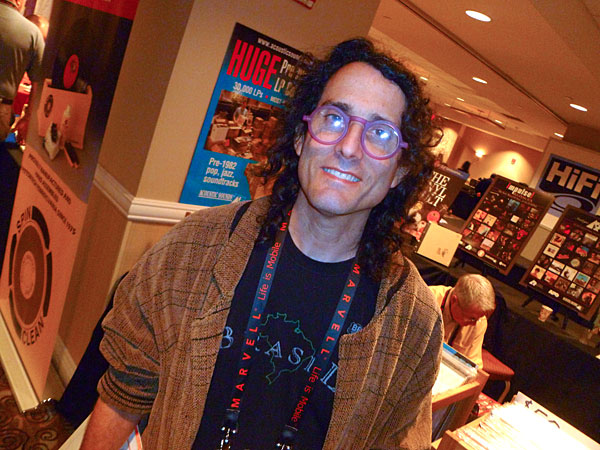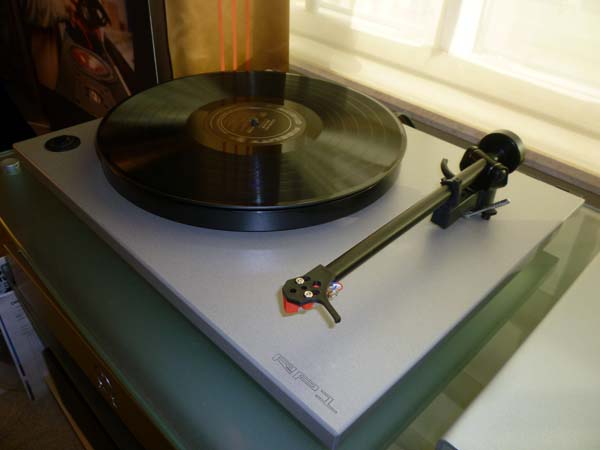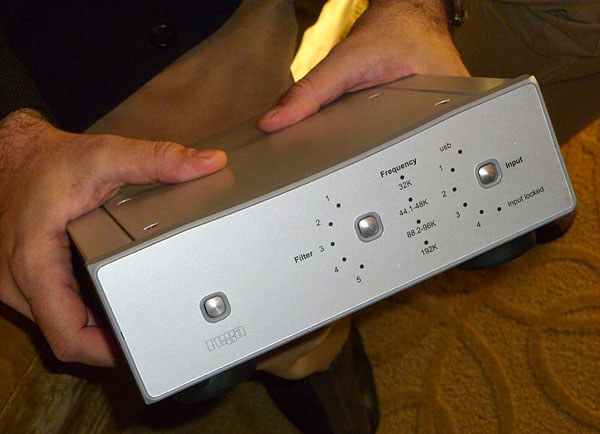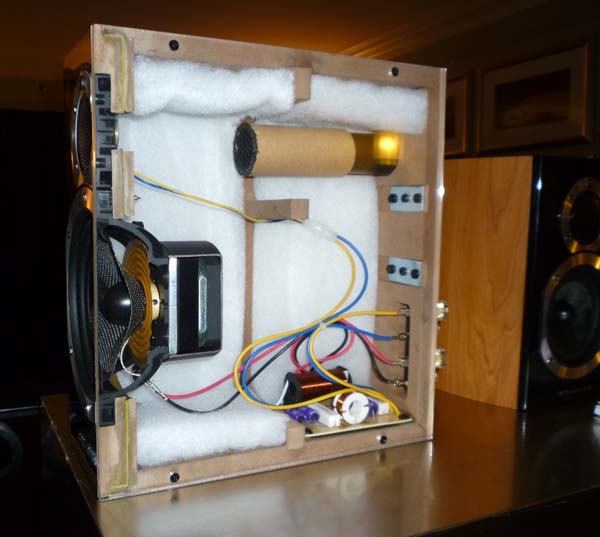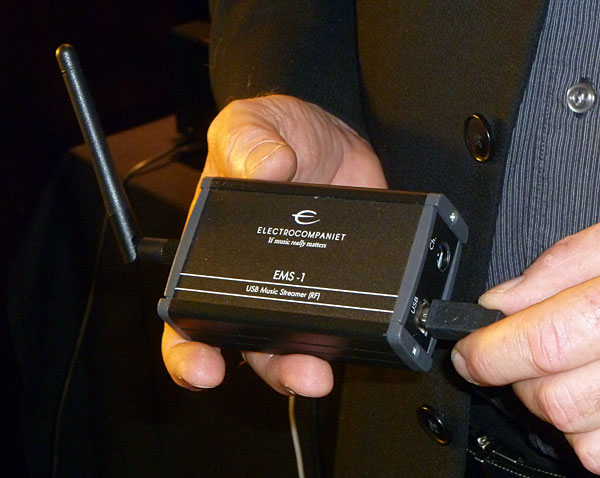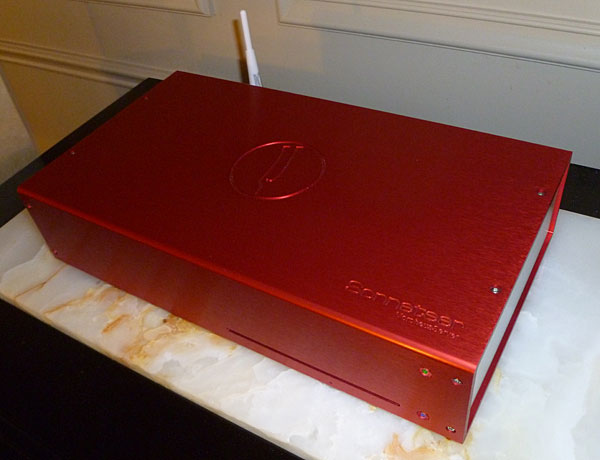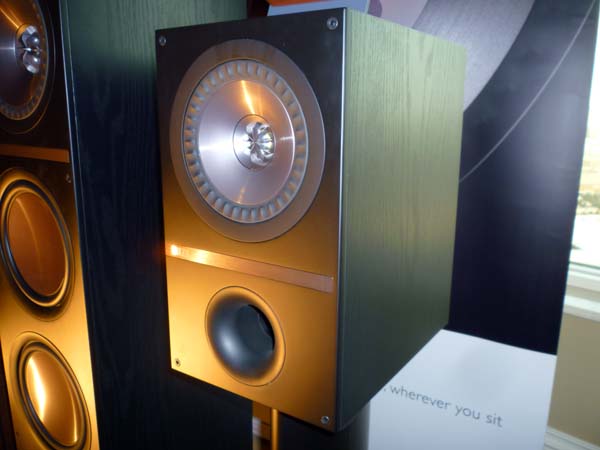LATEST ADDITIONS
HDtracks Announces 24bit/192kHz Downloads
Introductory pricing for these downloads is $26.98.
For those who are curious, David also noted that the awesome glasses he's wearing in the photo are made of a rubbery plastic, which he says he chose because his kids can't break them.
Rega's RP-1 record player
Sharing the Enthusiasm
Rega DAC
The DAC also has five front panel selectable filter settings including an apsodizing filter typically found on more expensive DACs. The DAC is shipping now and comes in silver or black.
Wharfedale's Diamond Series
Electrocompaniet PD 1 DAC and EMS 1 Wireless Streamer
The Accompanying EMS 1 Streamer (shown in the photo above) allows you to stream from any remote computer without any cables, and the company claims there will be no loss in quality compared to a hardwired USB connection. The EMS 1 will retail for $300 and also be available in about 3 months.
Sonneteer Server
Sonneteer presented the production version of the $4,000 Server they were showing last year, this time with optional WiFi, and 3TB of storage.
Peachtree Audio iDac
This is a DAC only product and is loaded with inputs: 24/96 USB, 24/192 SPDIF coax (2) and optical (2). There is also a video out for watching iPod video content and two buttons for selecting filter settings.
And of course the iDac is wrapped in Peachtree's unique non-resonant MDF case with high-gloss finish.


